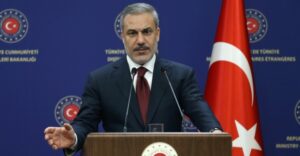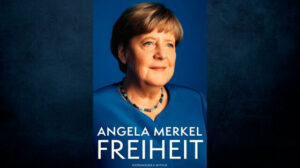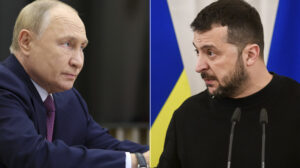Written by 17 world-leading scientists, the Earth Statement clarifies, in eight essential elements, what the international climate agreement in Paris in December should achieve in order to provide the world with a good chance of avoiding dangerous climate change. The first essential element is a commitment to limit global warming to below 2° Celsius, requiring a transition to a zero-carbon society by mid-century.
“The window of opportunity is closing fast. We are on a trajectory that will leave our world irrevocably changed, far exceeding the 2° Celsius mark. This gamble risks disaster for humanity with unmanageable sea-level rise, heat waves, droughts and floods. We would never consider this level of risk in any other walk of life, yet we seem prepared to take this risk with our planet. Conversely, the scientific evidence shows that we can create a positive future but only with bold action now,” said Johan Rockström, Chair of the Earth League, Executive Director of the Stockholm Resilience Centre and board member of the Global Challenges Foundation.
“The science, the economics and the moral imperative to protect our planet all demand this action. We are calling on policy-makers to show real leadership and commit the planet to a sustainable future,” continued Rockström.
The Earth Statement, released to coincide with Earth Day, warns of the risk of crossing tipping points – thresholds in the Earth system that are difficult to reverse once crossed. It highlights recent research suggesting dramatic ice melt in parts of Antarctica may be irreversible, which provides evidence that societies need to take a precautionary approach to significantly altering the global climate.
“COP21 is the moment of truth: the last chance to stay within the 2° Celsius upper limit,” said Professor Jeffrey Sachs, Director of the Earth Institute at Columbia University and an author of the Earth Statement. “The key to success is deep decarbonisation by mid-century. Our studies show that this can be accomplished, at modest cost, and with a significant improvement in the quality of life. Success will require a shared global vision, strong national commitments, and global cooperation on technology pathways.”
The eight essential elements of climate action are:
1. Governments must put into practice their commitment to limit global warming to below 2° Celsius in order to limit unprecedented climate impact risks.
2. The agreement must be based on the remaining global carbon budget – the limit of what we can still emit in the future – which must be well below 1000 GtCO2, to have a reasonable chance to hold the 2° Celsius line.
3. In the agreement, countries must commit to deep decarbonization, starting immediately and leading to a zero-carbon society by 2050 or shortly thereafter. This will require a fundamental transformation of the economy.
4. Equity is critical. Every country must formulate an emissions pathway consistent with deep decarbonisation. For the sake of fairness, rich countries and progressive industries can and should take the lead and decarbonise well before mid-century.
5. Targeted research, development, demonstration and diffusion (RDD&D) of low-carbon energy systems and sustainable land use are prerequisites to unleash a wave of climate innovation.
6. The agreement should provide the starting point for a global strategy to reduce vulnerability, build resilience and deal with loss and damage of communities from climate impacts, including collective action and scaled-up support.
7. Countries must agree to safeguard carbon sinks and vital ecosystems, such as forests, which is as important for climate protection as the reduction of emissions.
8. Governments must urgently realise new scales and sources of climate finance for developing countries to enable our rapid transition to zero-carbon, climate-resilient societies.
Rockström and John Schellnhuber, fellow Earth League member and director of the Potsdam Institute for Climate Impact Research, will present the Earth Statement at the 4th Nobel Laureates Symposium on Global Sustainability in Hong Kong on Thursday, 23 April, 2015. This will mark the beginning of outreach to leading decision-makers and thinkers.
To view the full Earth Statement and learn how to support the cause, please visit: earthstatement.org

About the Earth League
The Earth League is an international alliance of prominent scientists from world‐class research institutions, who work together to respond to some of the most pressing issues faced by humankind, as a consequence of climate change, depletion of natural resources, land degradation and water scarcity. The Earth League aims to provide decision makers with multiple options for addressing pressing sustainability issues, by delivering robust background information and enhancing transparency of the choices available.
Authors of the Earth Statement
Earth League Members: Chair: Johan Rockström, Stockholm Resilience Center, Sweden; Guy P. Brasseur, Max Planck Institute for Meteorology, Germany;Ottmar Edenhofer, Mercator Research Institute on Global Commons and Climate Change, Germany; Sir Brian Hoskins, Grantham Institute – Climate Change and the Environment at Imperial College London, UK; Pavel Kabat, International Institute for Applied Systems Analysis, Austria; Mario J. Molina, Centro Mario Molina, Mexico; Jennifer Morgan, World Resources Institute, USA; Nebojsa Nakicenovic, International Institute for Applied Systems Analysis and Vienna University of Technology, Austria; Carlos Nobre, National Institute for Space Research (INPE), Brazil; Veerabhadran Ramanathan, Scripps Institution of Oceanography, San Diego (UC), USA; Hans Joachim Schellnhuber, Potsdam Institute for Climate Impact Research, Germany; Peter Schlosser, Earth Institute, Columbia University, USA; Youba Sokona, The South Center, Switzerland; Leena Srivastava, TERI University, India; Lord Nicholas Stern, Grantham Research Institute on Climate Change and the Environment, London School of Economics and Political Science, UK; Guanhua Xu, Chinese Academy of Sciences, China; Additional author (not EL member): Jeffrey Sachs, The Earth Institute, Columbia University
About the Global Challenges Foundation
The Global Challenges Foundation works to raise awareness of the greatest threats facing humanity and how these threats are linked to poverty and the rapid growth in global population. The Global Challenges Foundation was founded in 2011 by investor László Szombatfalvy.





